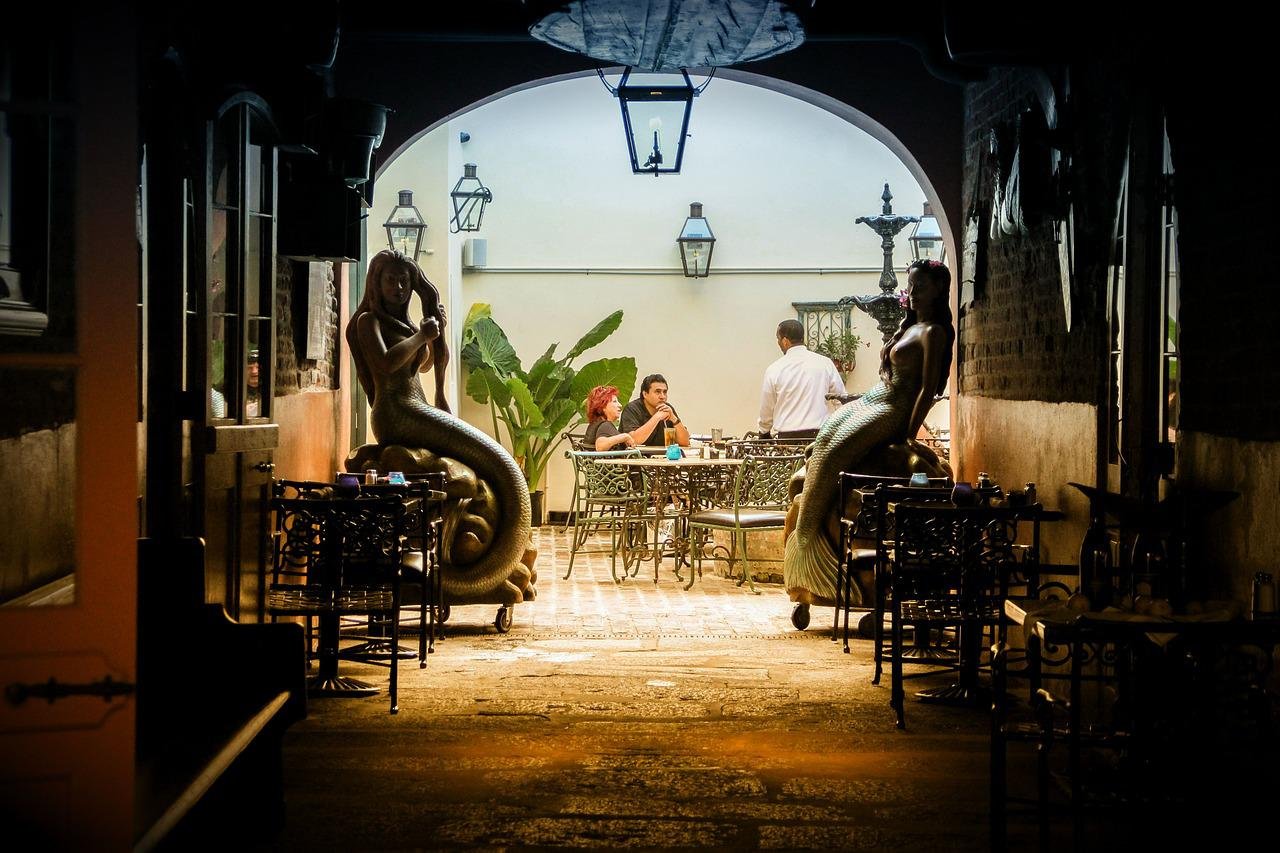The true heart of the city is the French Quarter. La Nouvelle Orleans was founded in 1718 by Jean-Baptiste Le Moyne de Bienville on a plot of land that had a natural levee. This was a sacred spot for the indigenous people of the area and could be the reason why New Orleans seems to be such a spiritual place. Very early on the streets were lined out in a grid pattern very common in European cities.
The Quarter, as it’s known by locals, extends in a 6 block by 13 rectangle. And many of the street names given back then still exist today. You can look at a map of the old city and see that many of the footprints of the houses are still the same today.
New Orleans was ceded to the Spanish in 1763 following the Seven Years’ War. The Great New Orleans Fire of 1788 and another in 1794 destroyed 80 percent of the city’s buildings, and so nearly all the French Quarter dates from the late 1790s onwards. The Spanish government insisted the new buildings were built of brick rather than wood, making them more fire resistant.
So as you walk along the streets you may be able to look into the courtyards and see that it is reminiscent of southern Spain. So, the View Carre (Old Quarter) is actually Spanish. Why is it called the French Quarter? Because it was mainly occupied by French speaking people. When they discovered New Orleans was now occupied by Spain they were horrified.
The Spanish did many improvements to the city. Besides rebuilding the Quarter after the horrific fire, they added the two buildings on either side of the St. Louis Cathedral, the Cabildo, the seat of the city’s government and the Presbytere.
With the Louisiana Purchase in 1803, which extended from New Orleans and the entire state all the way up to Canada, the USA added a tremendous amount of land for pennies on the dollar. Napoleon was desperate to get rid of it because he needed the money after squandering it on foreign wars.
New Orleans then became part of the United States which horrified the city’s French population even more! Americans were seen as crude opportunists and they quickly started flooding into the area. The French initially wanted nothing to do with them, didn’t want to include them in business affairs or the social structure of New Orleans.
So in response the Americans moved across what is now Canal Street to the area known as the Garden District. Here the wealthy built magnificent homes most of which still stand today, owned by prominent people and world-famous celebrities.
Eventually those that wanted to exclude the Americans died out and the city became the mix of cultures we see today: French, Spanish, Irish, Sicilian, German, English, African and Caribbean. In fact, New Orleans is still recognized at the northern most part of Caribbean.
In the early part of the 20th century the Quarter began going to seed, the wonderful unique homes with their balconies and galleries were occupied by many working class and lower income folks who did not have the wherewithal to keep the buildings in good condition.
At one point the Quarter was inhabited by a lot of Italians, mainly from Sicily and could have been called the Italian Quarter. Except for some forward-looking women who started the movement to rescue the French Quarter our founding city might have fallen into total disrepair and been torn down.
Back in the 20s and 30s the Quarter was home to many artists some of whom became very famous. Writer William Faulkner, the world-renowned playwright Tennessee Williams, and Sherwood Anderson all got there start as residents in this area, the Bohemian atmosphere of the time provided them inspiration to write some of their most famous works here. If you spend some time in the Quarter you can easily see why. Simply put, the French Quarter is beautiful and timeless.
Some of the most famous restaurants in the world started here. Places like Galatoire’s, Antoine’s, Arnaud’s, and Brennans are all award-winning and internationally recognized. Many famous musicians like Louis Armstrong, Dr. John, Al Hirt, Pete Fountain and others played in the Quarter. It’s also known for famous and popular bars and clubs.
And of course there is world-famous Bourbon Street, a big draw for tourists (and a street that most locals try to avoid except for several excellent restaurants) and Royal Street with its many art galleries and wonderful antique shops. Many excellent, elegant first-class hotels and smaller boutique, romantic-style hotels are all waiting for visitors that come from all over the world who want to experience that unique French Quarter feeling.
The French Quarter today is the city’s main attraction. For many it’s like going to Europe without having to leave the USA. And what a lot of visitors don’t realize is that is not a fake Disney back lot. This is a real thriving neighborhood, a desirable place to live. In fact, many Orleanians who live in other parts of the city have get-away places in the Quarter because they dig the vibe of the Vieux Carre and want to be part of the scene. Who can blame them. The Quarter is historic and beautiful with great food, great music and fun things to do.
And we believe locals appreciate it more than visitors because they understand it on a deeper level and feel part of its history and how it all began.




